From the wild heat of Death Valley to Alaska’s deadliest mountain. British explorer’s astonishing 3,500-mile journey across some of North America’s most extreme landscapes on skis, by foot… and on a bicycle
Talk about highs and lows.
British explorer Oli France braved the wild heat of Death Valley, the lowest point in North America, then biked and skied 3,500 miles to Alaska, where he reached North America’s highest point, Mount Denali.
This is also Alaska’s deadliest mountain, having claimed the lives of 126 climbers since 1932.
It took the 33-year-old father-of-two from Wigan 64 days to reach the summit.
He completed the first stage alone, cycling across America and Canada to the foothills of Denali National Park, where he met a four-man mountaineering team who joined him to climb Denali via the West Buttress Route.
Oli, who is the first Briton to complete the journey in 20 years, told MailOnline Travel: ‘I started to believe this would be the hardest physical, mental and logistical challenge I have ever taken on. I wasn’t wrong.’
Oli France braved the wild heat of Death Valley, the lowest point in North America, then biked and skied 3,500 miles to Alaska, where he reached North America’s highest point, Mount Denali. He is pictured here in Badwater Basin in Death Valley
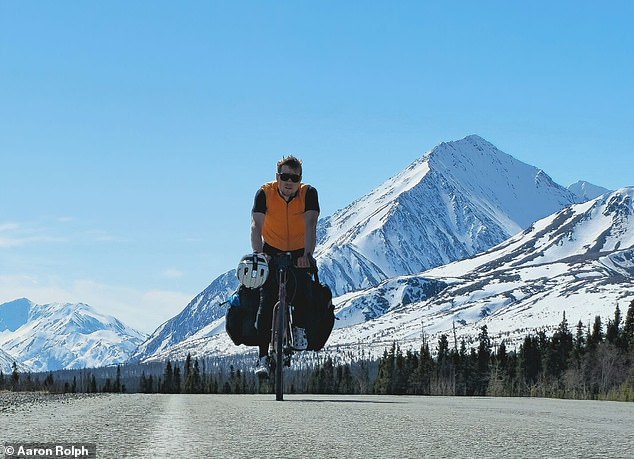
Oli completed the first part of the journey alone, cycling across America and Canada to the foothills of Denali National Park. He is pictured here in Destruction Bay in the Yukon Territories of Canada
Oli said he wanted to ‘complete this expedition in a purely human-powered way’ and loaded a heavy bicycle with gear to complete the cycling phase of the journey.
He cycled more than 80 miles a day, through California, Nevada, Oregon, Idaho and Washington, then continued to Alaska via British Columbia and the Yukon Territories in Canada.
To rest, he camped in the wild along the side of the road and stayed in motels.
One of the scariest aspects of the journey for Oli was the dangerous animals he encountered along the way. While cycling alone through remote areas of Yukon and Alaska, he revealed that he had a few encounters with bears and came within four meters of a “huge black bear” along the way.
He said, “I knew the black bears and the huge grizzly bears would wake up from hibernation. Intensively looking at the dense surrounding forest [for animals] was exhausting.’
Sharing another animal encounter, he said, “One evening in my tent I heard the footsteps of a large animal outside in the snow. I grabbed my bear spray and slowly unzipped my tent. I saw a moose 50 feet away staring at me.”
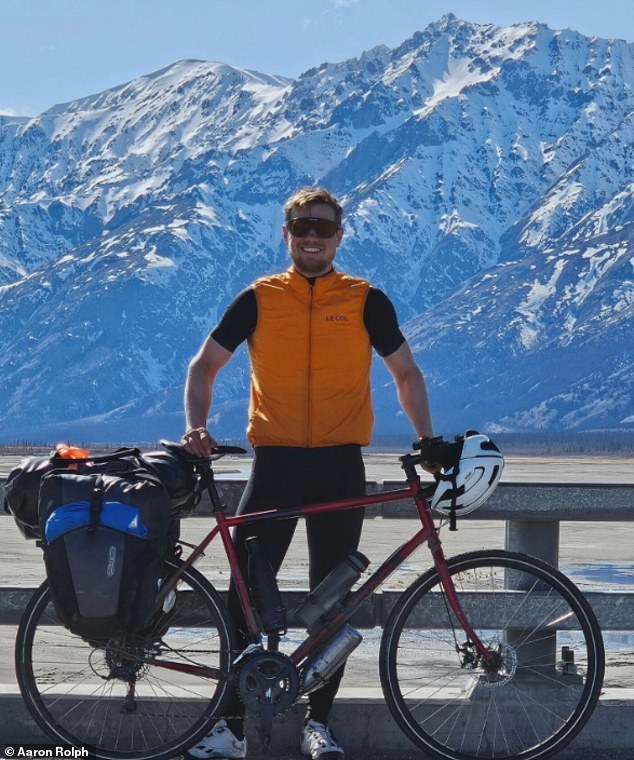
It took Oli 41 days to complete the cycling leg of the trip and reach Denali National Park (pictured)
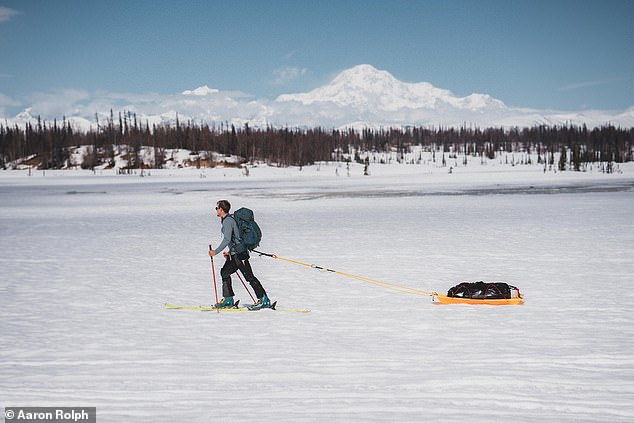
Oli met up with a mountain team and traveled 122 km (75 mi) to reach Denali Base Camp. He is pictured above walking through the foothills to base camp
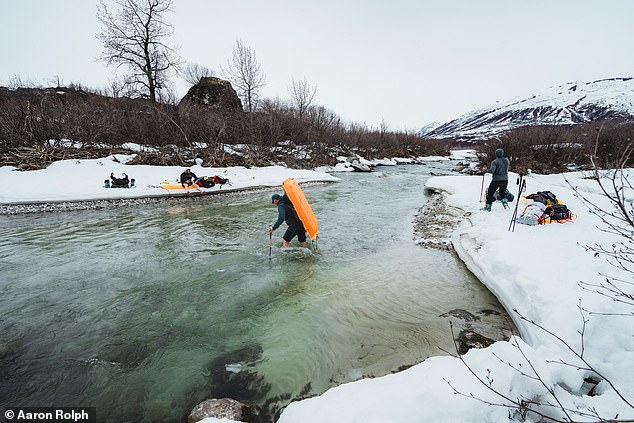
On the way to base camp he crossed rivers and glaciers full of deadly gorges. The above image shows Oli and his team as they trek through Alaska’s Granite Creek River
Oli said adjusting to the bike during the first few weeks was one of the hardest parts of the expedition.
He explained: ‘I was cycling long distances against strong headwinds and snow storms, I was completely alone. Mentally I was already wondering if this expedition was even possible. I had to go through a deep, dark barrier of pain to keep going.”
It took him 41 days to reach Denali National Park. He then traveled 122 km (75 miles) on skis, crossing hills, rivers and glaciers full of deadly crevasses to reach Denali Base Camp, where most climbers begin their ascent.
Oli described the 6,190-meter (20,310-foot) mountain, also known as Mount McKinley, as “brutal.”
During the twelve-day climb, he “faced mountain storms, temperatures down to -30 degrees Celsius, encounters with bears, nearby avalanches, snowstorms and all kinds of physical pain.”
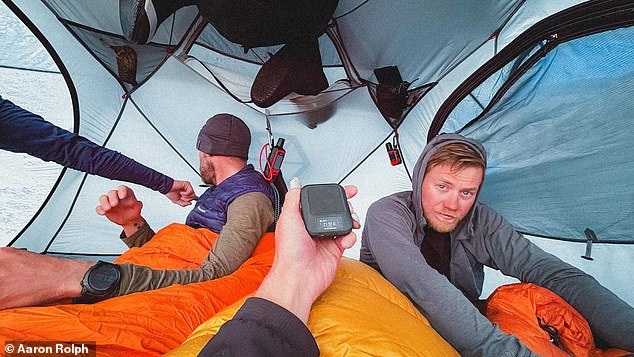
Oli revealed that the team lugged more than 300 pounds of equipment, food and fuel up the mountain on heavy sleds, sleeping in a tent in the snow every night.
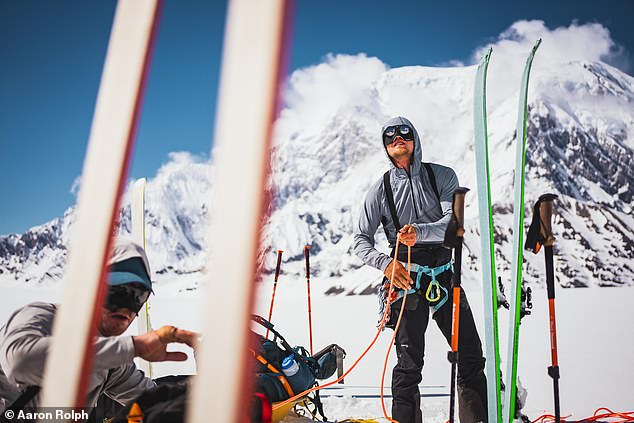
During the twelve-day climb he had to deal with mountain storms and temperatures as low as -30 degrees Celsius. Oli and his team are pictured above at Denali Base Camp
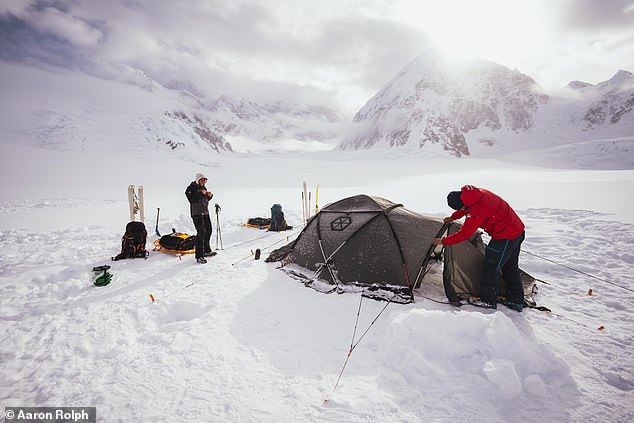
Oli said: ‘The expedition required absolute focus. At times I felt like there were a million ways it could go wrong.’ He is pictured above at Denali Camp One
Oli revealed that the team lugged more than 300 pounds of equipment, food and fuel up the mountain on heavy sleds, sleeping in a tent in the snow every night.
And it wasn’t easy to relax.
Oli said, “One night from my tent I heard wolves in the mountains. Another evening, on the mountain just 20 yards from our tent, we found an elk carcass that had been ravaged by a bear, next to huge grizzly prints. Each footprint was the size of a dinner plate.”
The days also had their challenges. Oli recounted a particularly frightening experience: ‘After climbing a steep piece of ice to an altitude of 5,000 meters [16,404ft] Ridge we saw the body of a climber who was taken from the mountain by helicopter after dying in a fall.
‘It reminded us of the small margins that exist here and that we cannot afford complacency.
‘The expedition required absolute focus. Sometimes I felt like there were a million ways things could go wrong.”
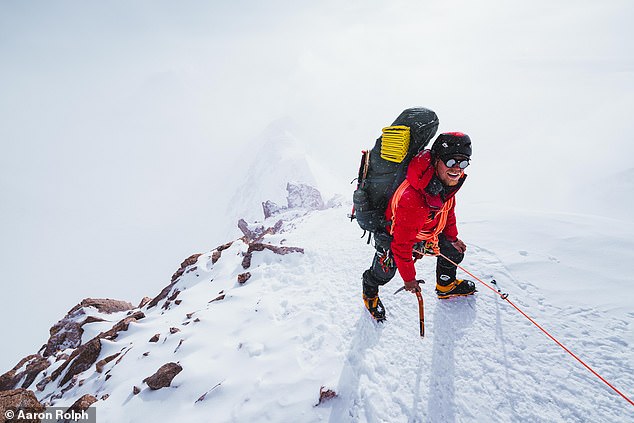
Oli described Mount Denali as “brutal.” He is pictured above on the last part of his journey, on his way to the summit
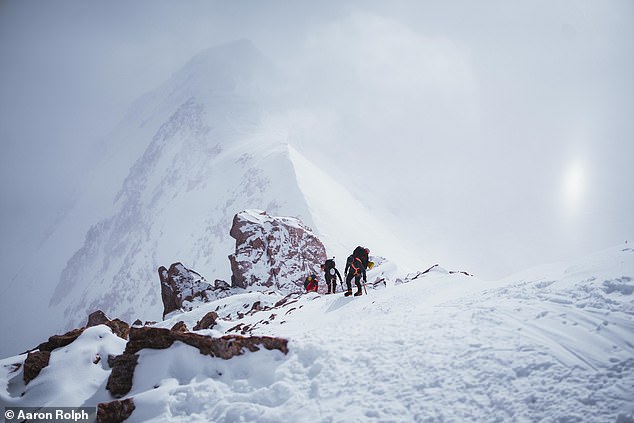
After completing the journey, Oli said he felt ‘relief because he got through unscathed’
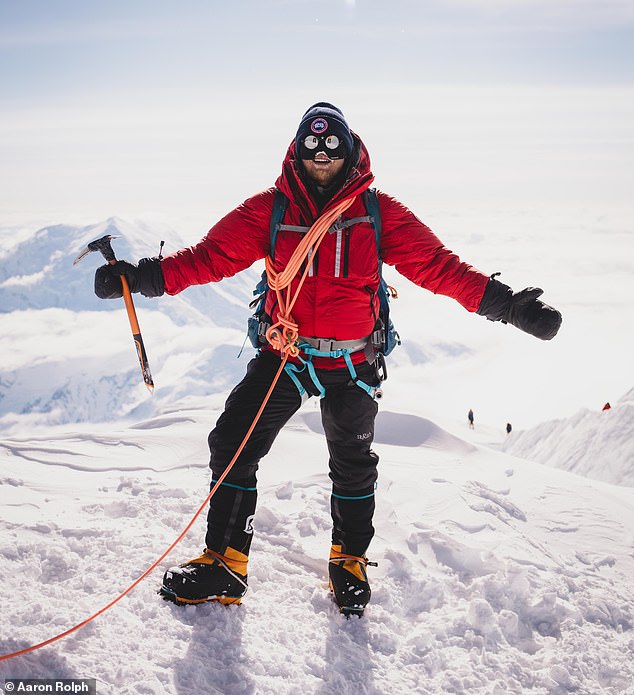
Oli is pictured on the 6,190-foot summit of Denali. He said he felt an “incredible sense of empowerment and satisfaction at having fulfilled a 10-year dream”
After completing the journey, Oli felt relieved that he had made it through unscathed and had an “incredible sense of strength and satisfaction that he had fulfilled a dream he had had for ten years.”
The expedition is the second phase of Oli’s ‘Ultimate Seven’ project. The adventurer hopes to set a world record by traveling from the lowest point to the highest point on every continent.
After completing last year’s African leg and this year’s North American leg, Oli plans to take on the challenge in Asia, where he will cover 7,500 kilometers on foot, bike, skis and kayak from the Dead Sea to Everest through nine countries.
To see more of Oli, visit his website, www.wildedge.co/pages/oli-france. Or follow him on Instagram at www.instagram.com/oli_france/?hl=enor on TikTok at www.tiktok.com/@oli_france.
